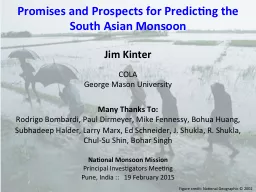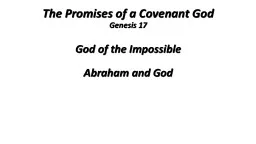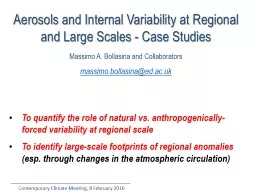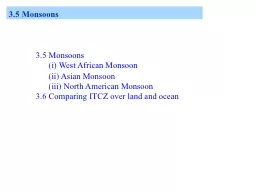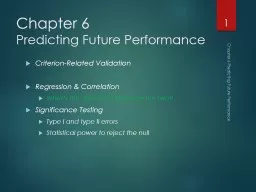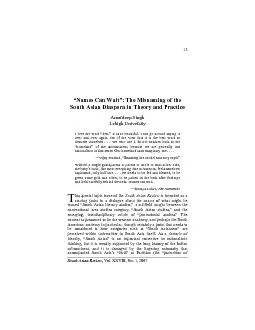PPT-Promises and Prospects for Predicting the South Asian Monsoon
Author : dsnature | Published Date : 2020-04-28
South Asian MonsoonbrOne of largest variations of seasonal to interannual climate observed on Earthbr brAffects lives property and largely agrarian economies of
Presentation Embed Code
Download Presentation
Download Presentation The PPT/PDF document "Promises and Prospects for Predicting th..." is the property of its rightful owner. Permission is granted to download and print the materials on this website for personal, non-commercial use only, and to display it on your personal computer provided you do not modify the materials and that you retain all copyright notices contained in the materials. By downloading content from our website, you accept the terms of this agreement.
Promises and Prospects for Predicting the South Asian Monsoon: Transcript
Download Rules Of Document
"Promises and Prospects for Predicting the South Asian Monsoon"The content belongs to its owner. You may download and print it for personal use, without modification, and keep all copyright notices. By downloading, you agree to these terms.
Related Documents

